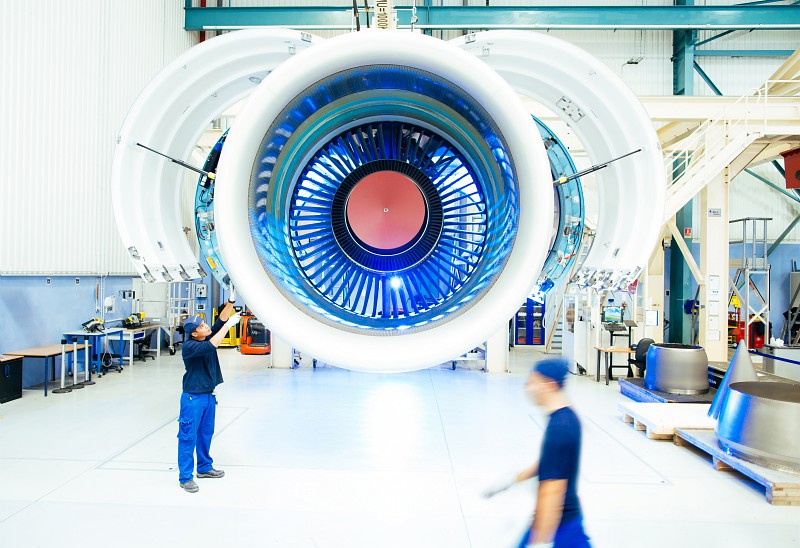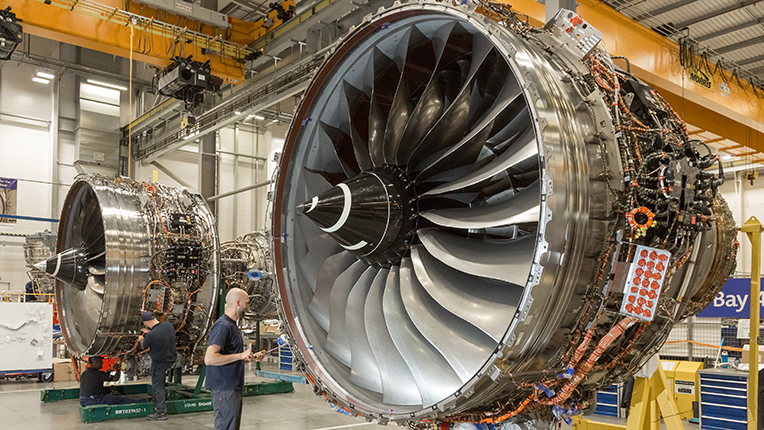The years between World War I and World War II were remarkable in the history of flight—so much so that it has been dubbed the Golden Age of Aviation. The period was notable for the evolution of aircraft from slow wood-and-fabric biplanes to faster, all-metal monoplanes; the development of lightweight aero engines of increasing power; and the inauguration of transoceanic commercial airline service, among other milestones.

Could aviation be in its second golden age? Such a thesis could have merit, given some of the scientific advances that have emerged in recent years and those that will enter mainstream aviation in the not-to-distant future, and will bring seismic shifts to the concept of flight.
Take electric propulsion for civil and commercial, for example.
It wasn’t that long ago that the idea of electrically propelled aircraft seemed too dim a prospect to warrant much more than a passing thought. But advances in enabling technologies have been coming at such a rapid pace that aviation once again is on the cusp of transformation.
Looking at the progress in the science of electric propulsion in recent years through a different lens, the parallel with the automotive industry and the concept of self-driving cars is striking. Autonomous technology is so hot today that it’s easy to forget Detroit’s initial resistance to it a mere seven or eight years ago. Today, automakers and some of Silicon Valley’s biggest tech giants are scrambling to plant big-money stakes in a transportation landscape that is swiftly being reshaped by self-driving technology and the trend toward electrically powered drivetrains; some original equipment manufacturers have even set deadlines when they will discontinue making vehicles powered by internal combustion engines.
In aviation, nearly 100 electrically propelled aircraft are being developed around the world; more than half were unveiled within just the last 18 months, according to Munich-based Roland Berger Strategy Consultants. The allure is large reductions in aviation carbon emissions.
About 60 percent of the projects are being led by start-ups, and another 30 percent is the work of large aerospace companies. Academic and government institutions, such as NASA, and a smattering of non-aerospace companies account for the rest.
The majority of the projects are focused exclusively on battery technology for all-electric power generation intended primarily for general aviation aircraft and urban air mobility vehicles. More ambitious projects for regional air transport and large commercial aircraft are oriented mainly around hybrid-electric propulsion and the use of hydrocarbon-based fuels for extended range and/or greater power output.

One of the strongest endorsements of aviation’s electrification comes from Honeywell, a leading supplier of turbine engines for business jets. “All of us at Honeywell believe this market is a matter of when, not if,” said Bryan Wood, senior engineering director for hybrid-electric/electric propulsion. Engineers at Rolls-Royce, one of aerospace industry’s largest engine manufacturers, share Wood’s assessment. “For us, electrification is real,” said Michael Mekhiche, global head of Rolls-Royce’s electric team.
Honeywell is one of two major aerospace companies that have displayed large-scale test hardware for practical hybrid-electric and electric-powered aircraft. Safran has done the same.
As manufacturers of conventional gas turbines explore technologies suited to the electric propulsion market they are teaming with providers of electrical systems, motors and batteries. Super supplier United Technologies Corp. is one of the larger aerospace companies investing large sums in these allied fields. “As battery technology advances, we have to stay equally aggressive in advancing our underlying technologies,” United Technologies Aerospace Systems President David Gitlin noted.
Across the Atlantic, the European Union is funding a four-year Modular Hybrid Electric Propulsion Architecture program under its Horizon 2020 research initiative, with Slovenian aircraft manufacturer Pipistrel leading the effort. The program will explore, among other areas, whether a system that will undergo tests using light aircraft can be scaled up to power commercial aircraft carrying as many as 70 passengers.
To be clear, all electric is unlikely to be the power source of choice for all forms of aviation. Different propulsion architectures will be used for different types of platforms, and electric and hybrid-electric will be a process that is introduced in phases. It’s likely to start with general aviation, including short-range urban air taxis, followed by aircraft flying regionally, and then longer range commercial aircraft much later. “It’s a question of timing,” noted the leader of another hybrid-electric propulsion team. Of course, regulatory readiness and public perception will also be pacing issues.
The bottom line is this: While aircraft powered by batteries or hybrid-electric power won’t be plying the airways in large numbers in the near term, there will be flying test beds starting in 2019 to validate which technology is best suited for which type of air vehicle. Aviation’s electrification is coming and is likely to arrive sooner rather than later, given the extraordinary array of R&D programs underway and the momentum that will continue to build.
Between the development in earnest of electric and hybrid-electric propulsion, the rapidly expanding commercial applications of unmanned aerial systems, the emergence of the urban air mobility market and a nascent space tourism industry, the outlines of an industry that will look very different within the next five to 10 years is unmistakable.
Whether this translates into a second golden age of aviation may be debatable, but this much is certain: With each generation of inventions standing on the shoulders of those that have come before them, the pace of innovation is accelerating and the landscape is being reshaped in profound ways.
As Roland Berger partner Robert Thomson put it: “Electric propulsion is ushering in an age of innovation in aerospace and aviation of a type not seen in decades.”
